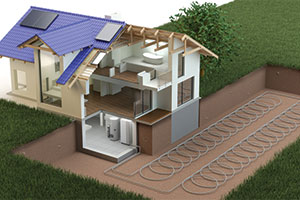Transitioning to renewable energy and the financial implications involved
Rachel Galbraith is a Director and Head of Agriculture, Renewables and Sustainability at MAF Finance Group. Here, she talks through the financial packages available to farmers and the return on investment renewable energy can have on your business.
Farmers are making substantial changes to the efficiencies in which they operate as the agricultural industry strives to become net zero by 2040, ten years ahead of the government’s target. Next generation farmers in particular are looking at ways they can drive their renewable energy plans forward as investment in machinery and storage of crops paves the way for long-term savings, often discounting traditional farming methods.
 With uncertainty around Brexit, trade deals and the impact of demand for home-grown produce, farmers need to think about other income streams to support their activities, and renewable energy is a great example of this.
With uncertainty around Brexit, trade deals and the impact of demand for home-grown produce, farmers need to think about other income streams to support their activities, and renewable energy is a great example of this.
Many farmers have a vision of what renewable energy they want to use, and with the right expertise and guidance, a detailed strategy can be implemented to identify the most sustainable source of energy that will give your business the biggest return on investment; whether that be Ground Source Heat Pumps (GSHP), Solar or Wind Power.
By way of an example, GSHP are often used to increase the quality of hay production and enhance financial returns. Whereas traditional methods following harvesting would involve leaving bales in the field to dry naturally, this can result in significant losses due to spoilage in wet conditions. By using GHSP, this allows the hay to dry in a controlled environment, therefore improving farm yields and the quality of the hay. This is then commonly sold to the equestrian industry as the hay is of the right quality for racehorses and thoroughbreds alike, consequently enhancing your returns.

A financial helping hand
However, renewable energy involves significant investment. As a guide, for a £1 million project, you can expect to invest around 10% of your own funds, which could be raised by leveraging money against land or other assets. Thankfully, with the help of tax savings and government schemes available, these incentives are driving farmers towards more sustainable farming as cashflow projections show that renewable energy is very profitable.
In March 2021, the government introduced the Super Deduction tax scheme allowing businesses that are investing in qualifying new plant and machinery assets able to claim:
- a 130% super-deduction capital allowance on qualifying plant and machinery investments
- a 50% first-year allowance for qualifying special rate assets
The super-deduction will allow companies to cut their tax bill by up to 25p for every £1 they invest, ensuring the UK capital allowances regime is amongst the world’s most competitive. This scheme is planned to run until March 2023.
There is also the Basic Payment Scheme (BPS), which is the biggest of the rural grants and payments that provide help to the farming industry. Farmers apply once a year - between March and May - and payments begin in December. Decreasing the Basic Payment Scheme (BPS) is a worry to many farmers - it’s long been the difference between making a profit on a farm or not. Farmers in England will see BPS funding phased out and new agri-environmental funding brought in over a 7-year transition period under proposals outlined in the Agricultural Bill. In short, BPS money will be reduced in stages from 2021- 2027, being completely removed by 2028.
Finally, another scheme in the planning is the Environmental Land Management Scheme. There are 3 new schemes that will reward environmental land management, these include:
- Sustainable Farming Incentive
- Local Nature Recovery
- Landscape Recovery
The most appropriate is the Sustainable Farming Incentive scheme which will pay farmers to manage their land in an environmentally sustainable way.
The scheme is made up from a set of standards. Each standard is based on a feature like hedgerows or grassland, and contains a group of actions you need to do. You can choose which standards you want to do, and where on your land to apply them and you’ll be paid for doing the actions within the standards you choose. This scheme has been piloted since 2021 and is due to launch in 2022 – further details are yet to be provided.
Reaping what you sow
Farming is at an exciting period right now as more farmers are looking to start their net zero journey. Hopefully this a helpful summary of the support available, designed to inspire farmers to look into renewable energy sources that much quicker, and useful for those that are far more progressed.
I’ve worked in this sector for over a decade now and it feels like the momentum and appetite to contribute towards the climate challenge is really building. It’s encouraging that we are having the right conversations, and rewarding to see first-hand the profits that are being reinvested back into farming businesses as a result of using renewable energy sources.
I would therefore suggest that farmers start talking to us as we have an abundance of expertise in this area, previous banking experience which is useful, plus we have access to the market, suppliers, and brokers that can truly support your transition to sustainable farming.
- Log in to post comments

